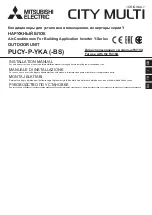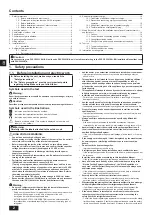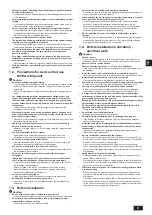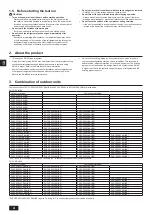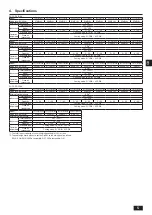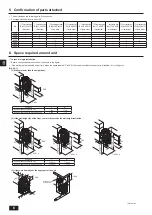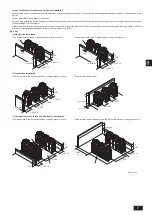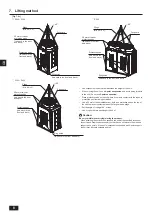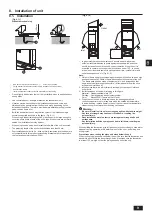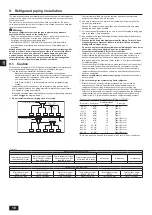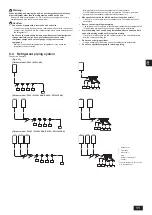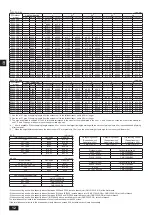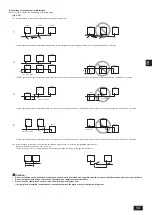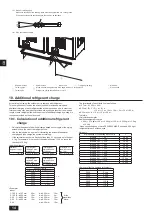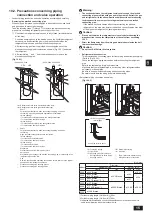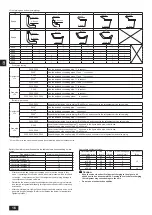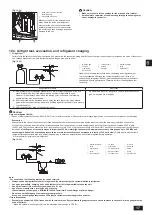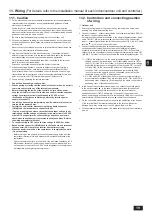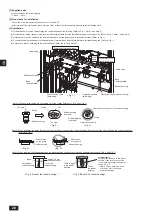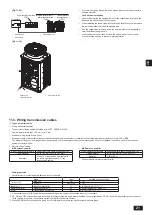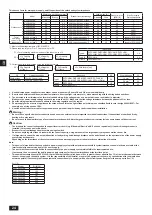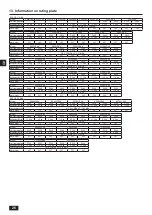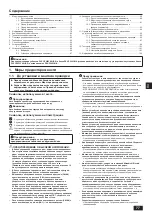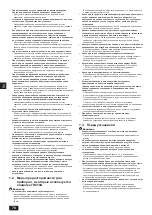
13
GB
Precautions for outdoor unit combinations
Refer to [Fig. 9.2.2] for the positioning of twinning pipes.
[Fig. 9.2.2]
<A> Install the piping so that oil will not accumulate in the stopped outdoor unit.
1.
A
C
F
F
unit 1
unit 2
unit 3
C
F
F
B
unit 1
unit 2
unit 3
The NG example shows that oil accumulates because the units are installed on a reverse gradient while unit 1 is in operation, and unit 3 is stopped.
2.
h1
unit 1
unit 2
unit 3
unit 1
unit 2
unit 3
h1 = 0.2 m max
h1
unit 1
unit 2
unit 3
h1 > 0.2 m
The NG example shows that oil accumulates into units 1 and 2 while unit 3 is in operation, and units 1 and 2 are stopped. Vertical pipe height (h1) should be 0.2 m or below.
3.
h2
unit 1
unit 2
unit 3
h2 = 0.1 m max
h2
unit 1
unit 2
unit 3
h2 > 0.1 m
The NG example shows that oil accumulates into unit 1 while unit 3 is in operation, and unit 1 is stopped. Difference between unit and unit in height (h2) should be 0.1 m or below.
4.
h2
unit 1
unit 2
unit 3
h2 = 0.1 m max
h2
unit 1
unit 2
unit 3
h2 > 0.1 m
The NG example shows that oil accumulates into unit 3 while unit 1 is in operation, and unit 3 is stopped. Difference between unit and unit in height (h2) should be 0.1 m or below.
<B> When the piping on the outdoor unit side (from the twinning pipe) exceeds 2 m, ensure a trap (
gas pipe only
) within 2 m.
Make sure the height of the trap is 200 mm or more.
If there is no trap, oil can accumulate inside the pipe, causing a shortage of oil and may damage the compressor.
F
C
2 m
E
D
F
C
Caution:
• Do not install traps other than the ones between outdoor units described on a separate sheet to prevent oil backflow and compressor start-up failure.
• Do not install solenoid valves to prevent oil backflow and compressor start-up failure.
• Do not install a sight glass because it may show improper refrigerant flow.
If a sight glass is installed, inexperienced technicians that use the glass may overcharge the refrigerant.

